Lamborghini: At the Cutting Edge of Design
By Gautam Sen with Branko Radovinovic and Kaare Byberg
ISBN 978-185443-317-6
784 pages, 2 volumes, hardcover, dustjacket, slipcase
1070 illustrations
U.S. $250
Review by Pete Vack
All photos from the book
Review by Pete Vack
While you and I got old, Lamborghini, under Mimran, Chrysler and Audi, somehow managed to stay forever young. And thank goodness for that. Gautam Sen’s Volume Two of his epic Lamborghini, At the Cutting Edge of Design, leads us into unaccustomed territory, taking us from the Silhouette to the Terzo Millennio, from Mimran to Audi, detailing the models we’ve rarely thought about and introduces us to rare variations we never knew existed. Naturally, we are aware of the supercars and hypercars that were developed by Lamborghini in the 1990s to date. But not by any means too familiar; too many models, too many owners, too much money, too fast and too furious.
Resilience and Art
From 1972 to 1998, Lamborghini survived five different owners, a major recession, the Gulf War, and finally into the safe hands of the VW Audi combo. (Notably, the latest hybrid concept car, the Sián FKP 37, is named for the late Ferdinand Karl Piech, who was born in 1937.) Model by model, designer by designer, the authors take us through these years, explaining the perilous purchases, the attempts to make the Italian company more American, then English, then German. It is a most remarkable story of resilience and art. Briefly, the change was chaotic; Ferruccio to Rosetti, 1972; Rosetti to Mimran, 1980; Mimran to Chrysler, 1987; Chrysler to MegaTech, 1994; MegaTech to Audi, 1998.
The rapid change of ownership occurred as production models continued (the amazing Countach was built and sold throughout this era), new concept cars were developed by not only Lamborghini but Bertone, Zagato and others, and many staff and designer changes occurred. Therefore, constructing a simple chronological order for the book is often difficult, but the narrative flows well and logically.
In addition to drawings, art, photos and brochures illustrating every Lamborghini production car, concept car, proposal or ideas from the Lamborghini design studio, the book includes proposals from Zagato, Bertone, Chrysler, and a host of others. Nothing slips through the cracks. Of particular interest are the many interviews conducted by the authors, including but not limited to: Marcello Gandini, Luigi Marmiroli, Luc Donckerwolke, Walter de Silva, Filippo Perini and Mitja Borkert. Together they give us an impression of the challenges they faced as designers and how they contributed to the projects at hand. To a person, whatever country they hailed from, they are all ‘car guys’, and truly thrilled at the opportunities they had to be part of the design team at Lamborghini.
Jodi Ellis’ layout is, in short, spectacular, each page a visual treat, not to mention the four inserts. She has created a series of fold outs, each totaling 34 by 12 inches, backed with a Lamborghini hexagon pattern. These are so large that we chose not to try to reproduce them online as it would diminish their impact.
Despite devoting two articles to review this massive work, we simply can’t describe the impact of this book. In our humble opinion, this two-volume set may stand as the final word on Lamborghini design, as the authors have achieved in-depth interviews with the main protagonists, and secured documents to support the assumptions and facts presented in the book. If ever there was a seminal work on Lamborghini design, this is it. (That leaves open a future book concentrating on the technical side of Lamborghini; anyone up for that?)
It will be the best $250 you will ever spend on a book, whether you are just interested in Italian car design, Italian car construction, or a Lamborghini enthusiast.
Below are some visual highlights from the book, at least from our point of view!
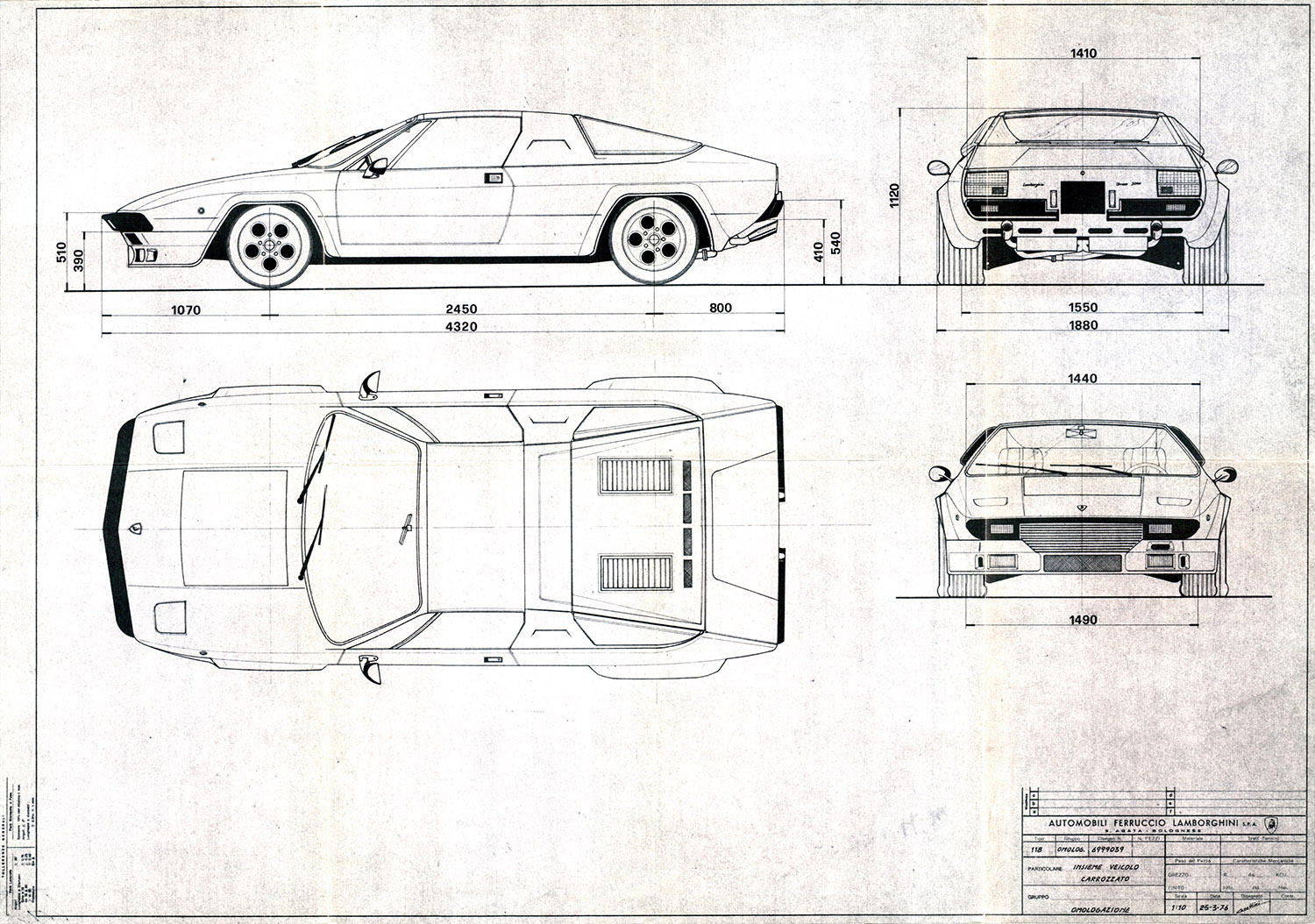
The 1976 silhouette, struggling out of the remains of the Uracco, but only 52 examples were sold. Lamborghini, then owned by the Rosetti and Leimer, was in trouble. This is an example of the many official drawings found in the work.

Perhaps ahead of its time, the Cheetah was not a Lamborghini at all. Its development cost Lamborghini a bundle and led to the sale of the company. But out of this came the LM001 and LM002, the anti-Lamborghini that succeeded anyway.
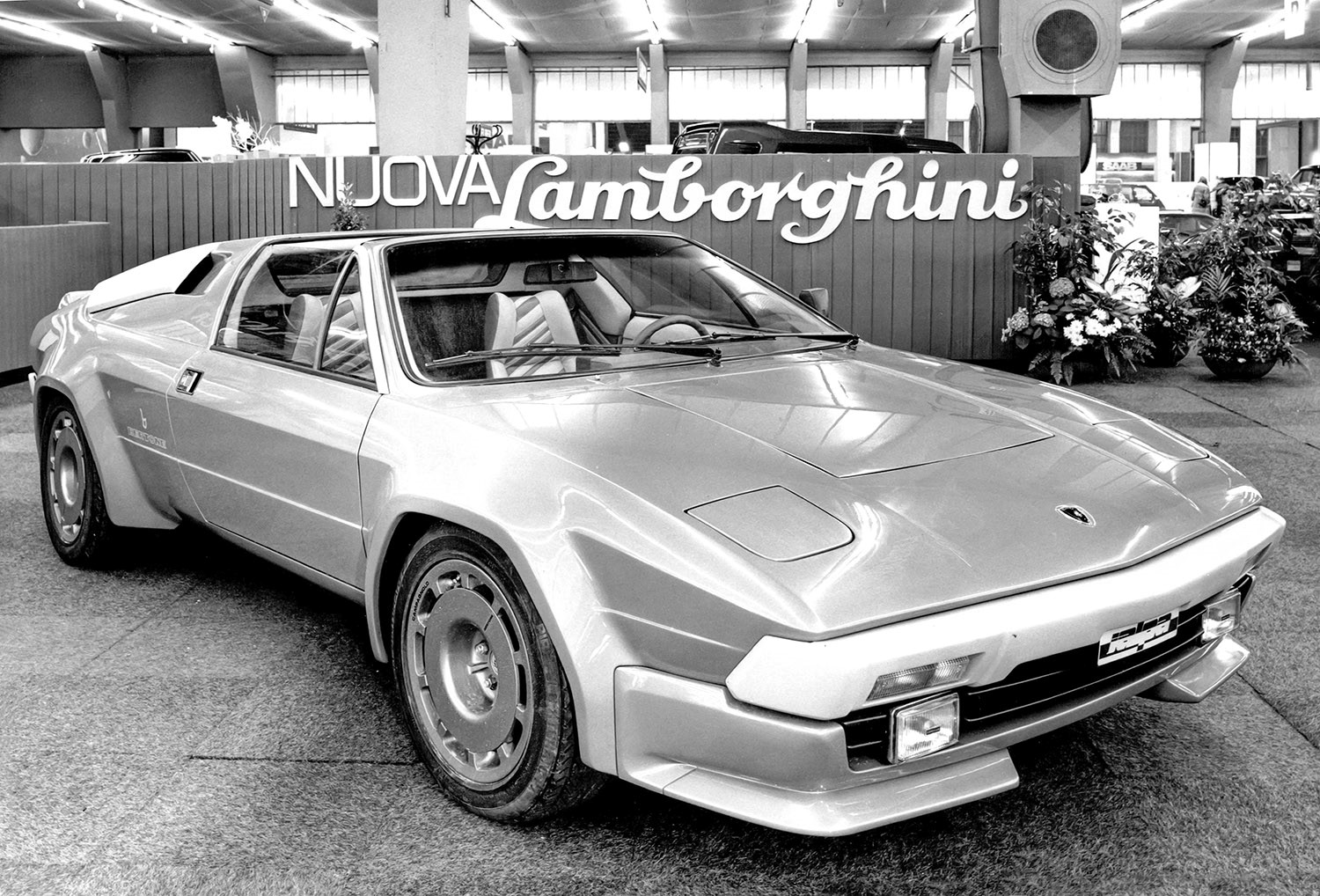
In 1985 the Jalpa was another attempt to break into the Ferrari 308GT market, using an updated V8 from the Silhouette. It was the last effort from Bertone, and only 410 were sold. It was also the last V8 until the Urus in 2017. We found that a black and white photo most favorably captured the essence of the Jalpa.
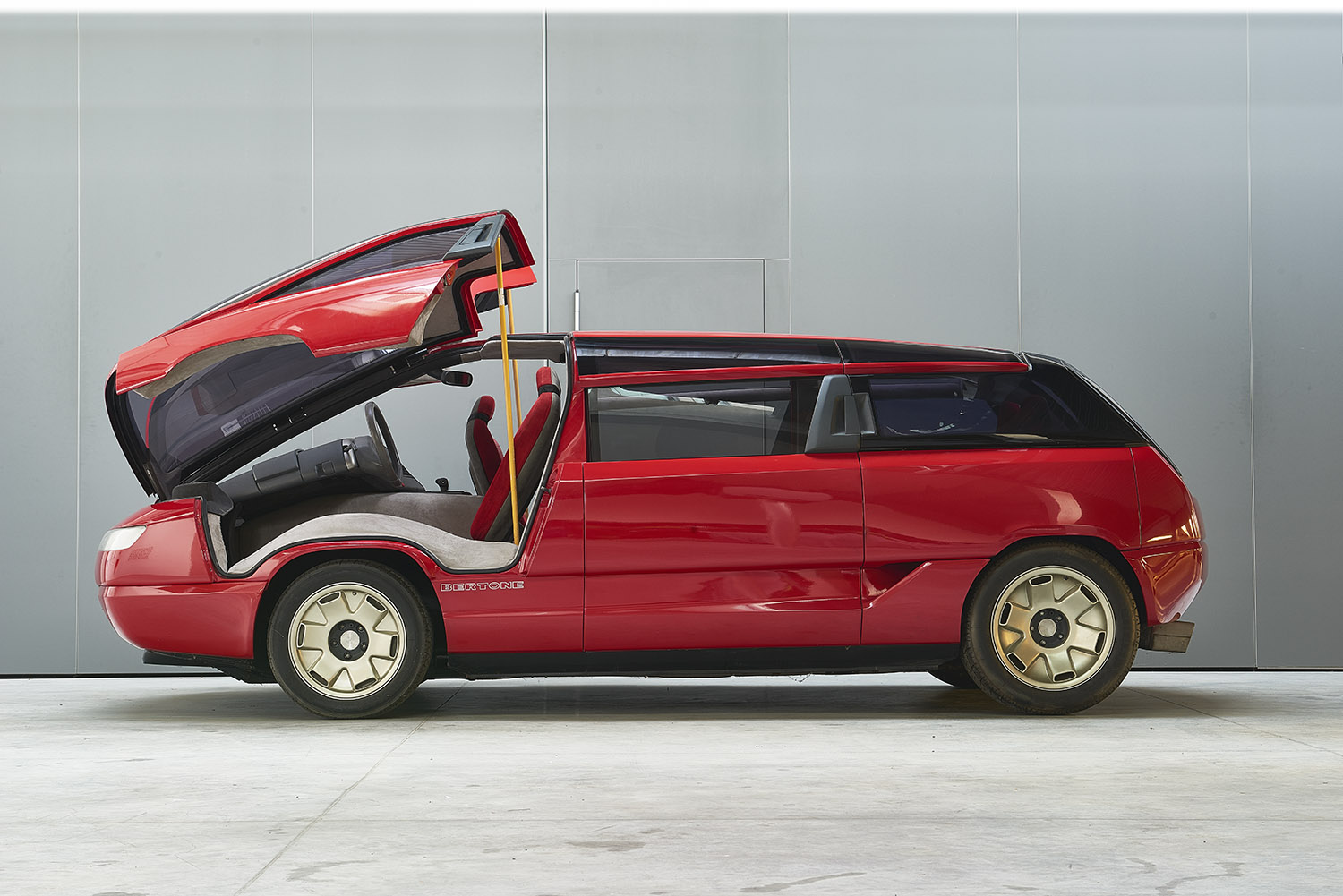
This Bertone concept car should have been a winner for Chrysler, who invented the mini van in the first place. A 1988 concept car, the Genesis got no attention from the Detroit firm who had no hand in its birth. The world was not ready for a high performance V12 mini van.
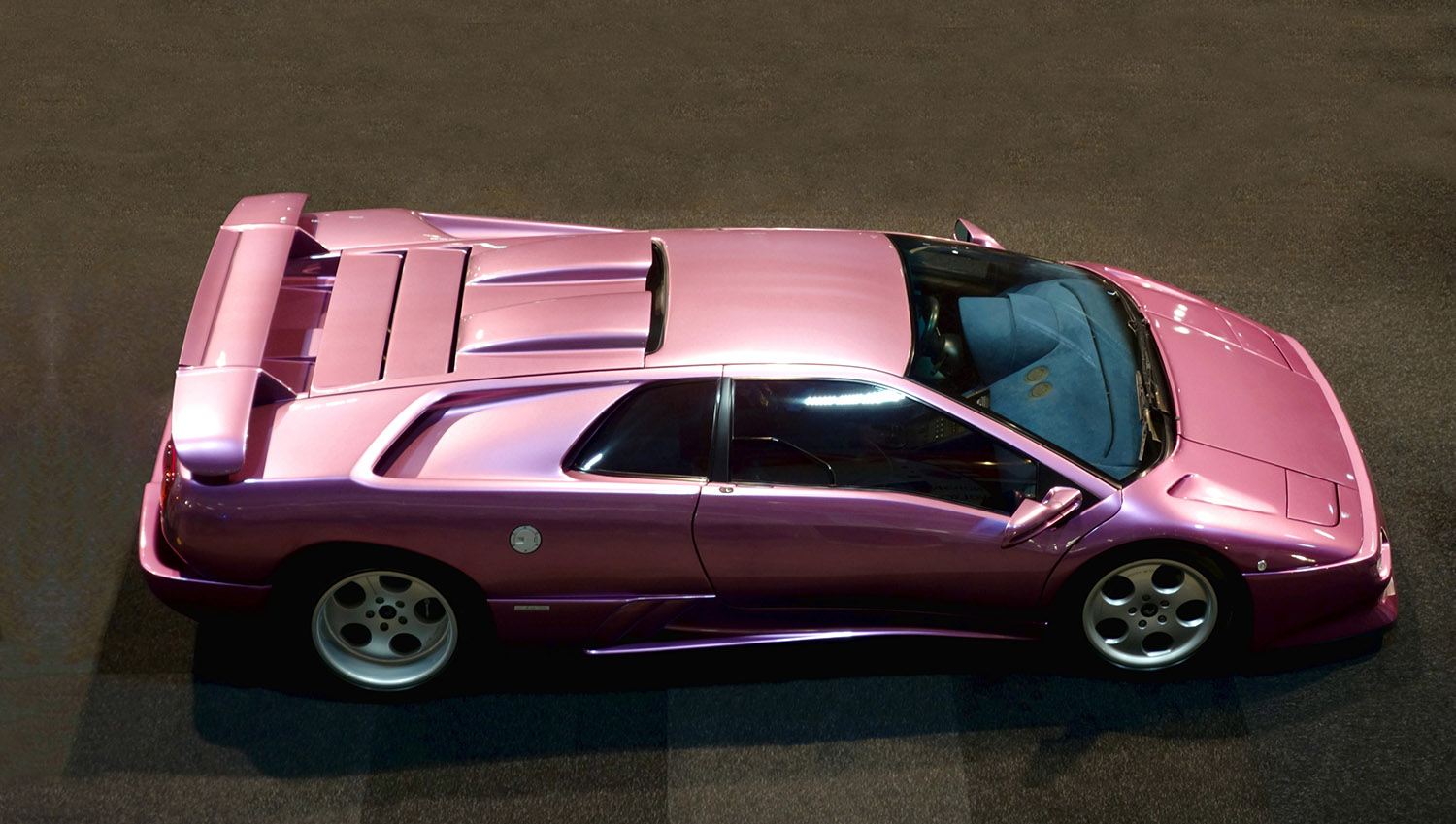
Enter era of Luigi Marmiroli, who ushered in the Diablo in 1987, born under the Mimran regime. Chrysler profited by the decisions made by Patrick Mimran, and most certainly from the efforts of Marmiroli and Gandini, who designed the prototype.
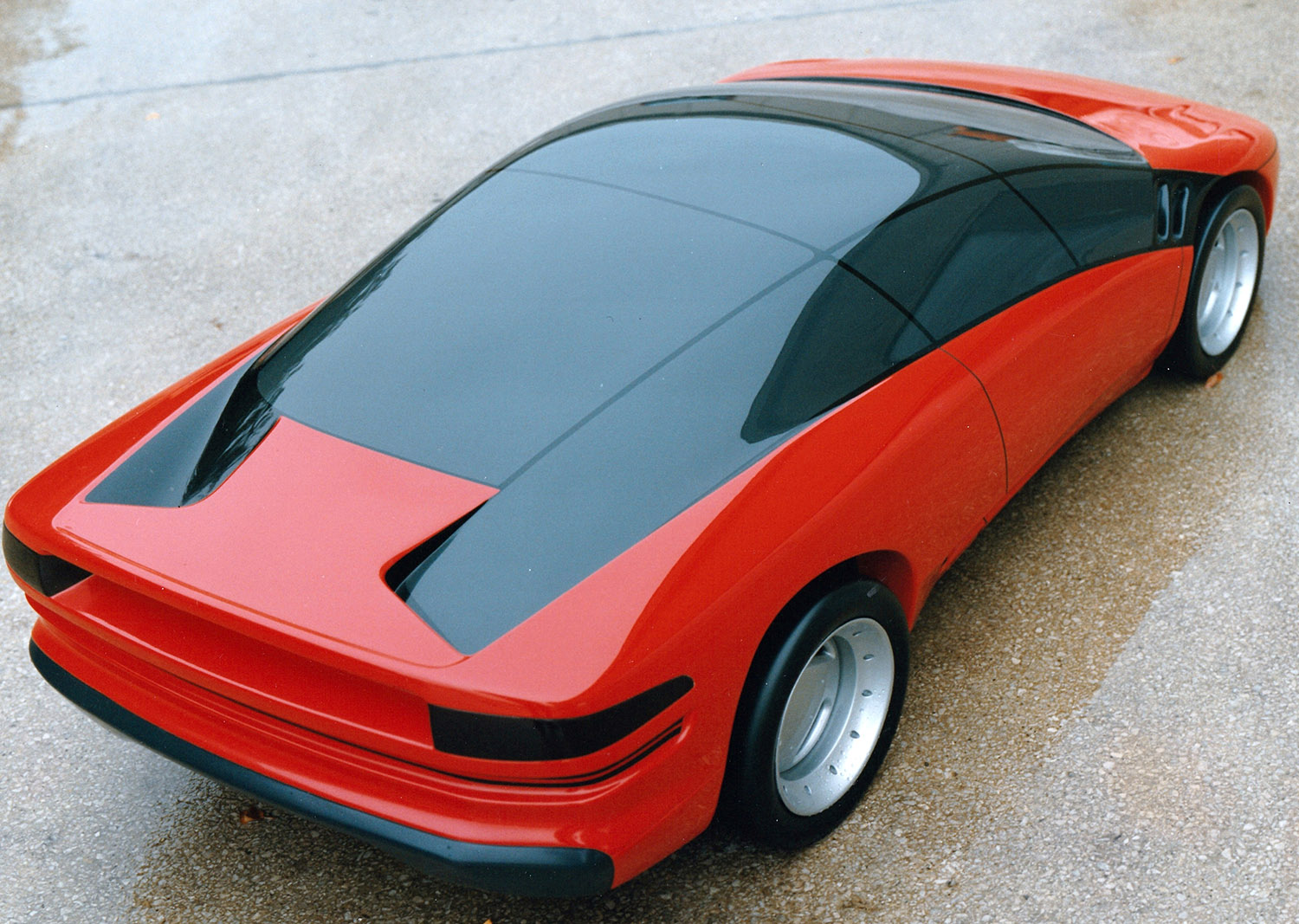
In comes Chrysler with their own design team. Sen describes the ups and downs of the Chrysler years at Lamborghini, which went surprisingly well given the physical and social distances between Detroit and Sant’ Agata. This is “…a Chrysler design for what they wanted to call the ‘Miura II’.”
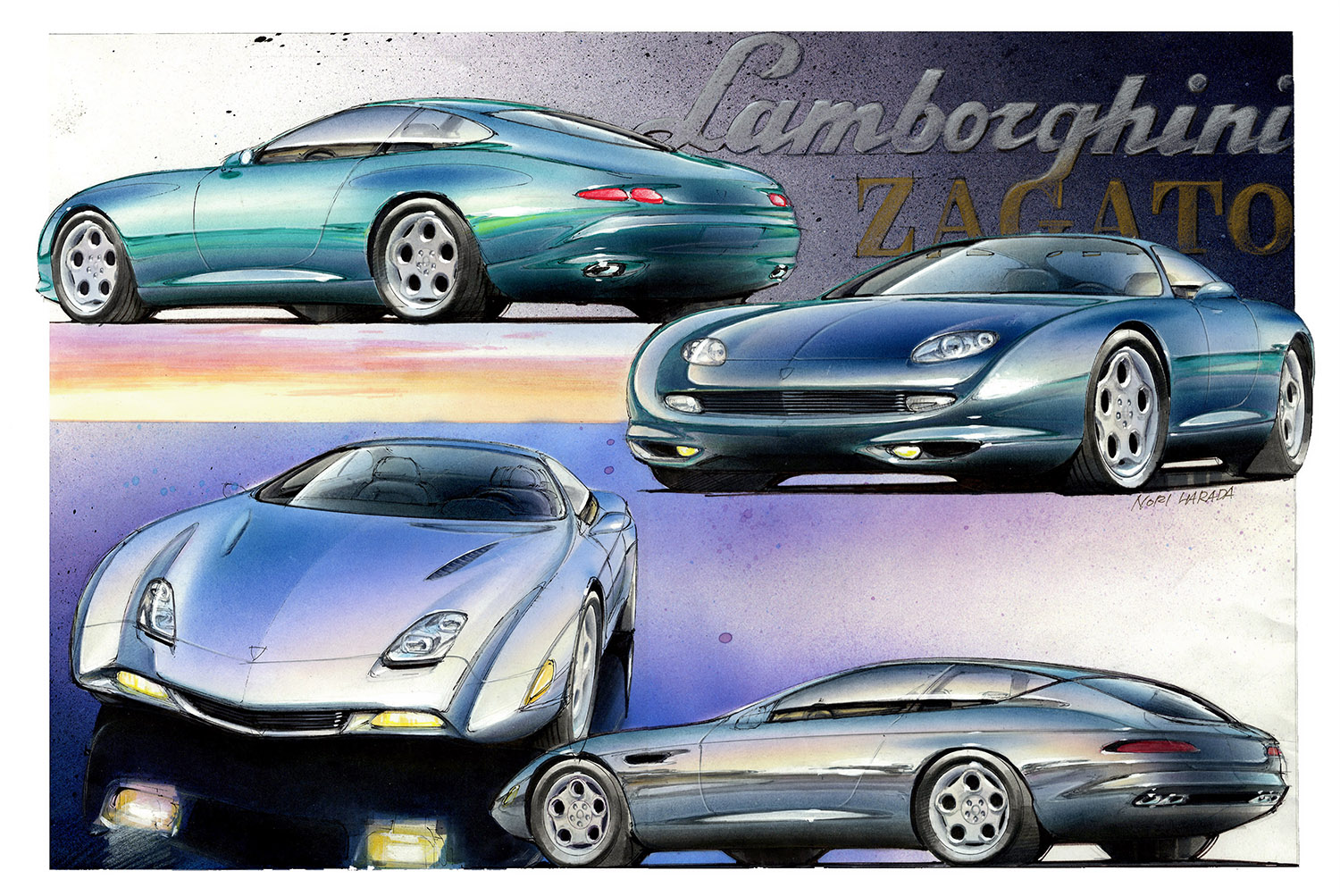
Under Andrea Zagato, Japanese designer Norihiko Harada came up with this idea for a front engine Lamborghini. Zagato would be asked to provide several concepts for Lamborghini in the mid 1990s.
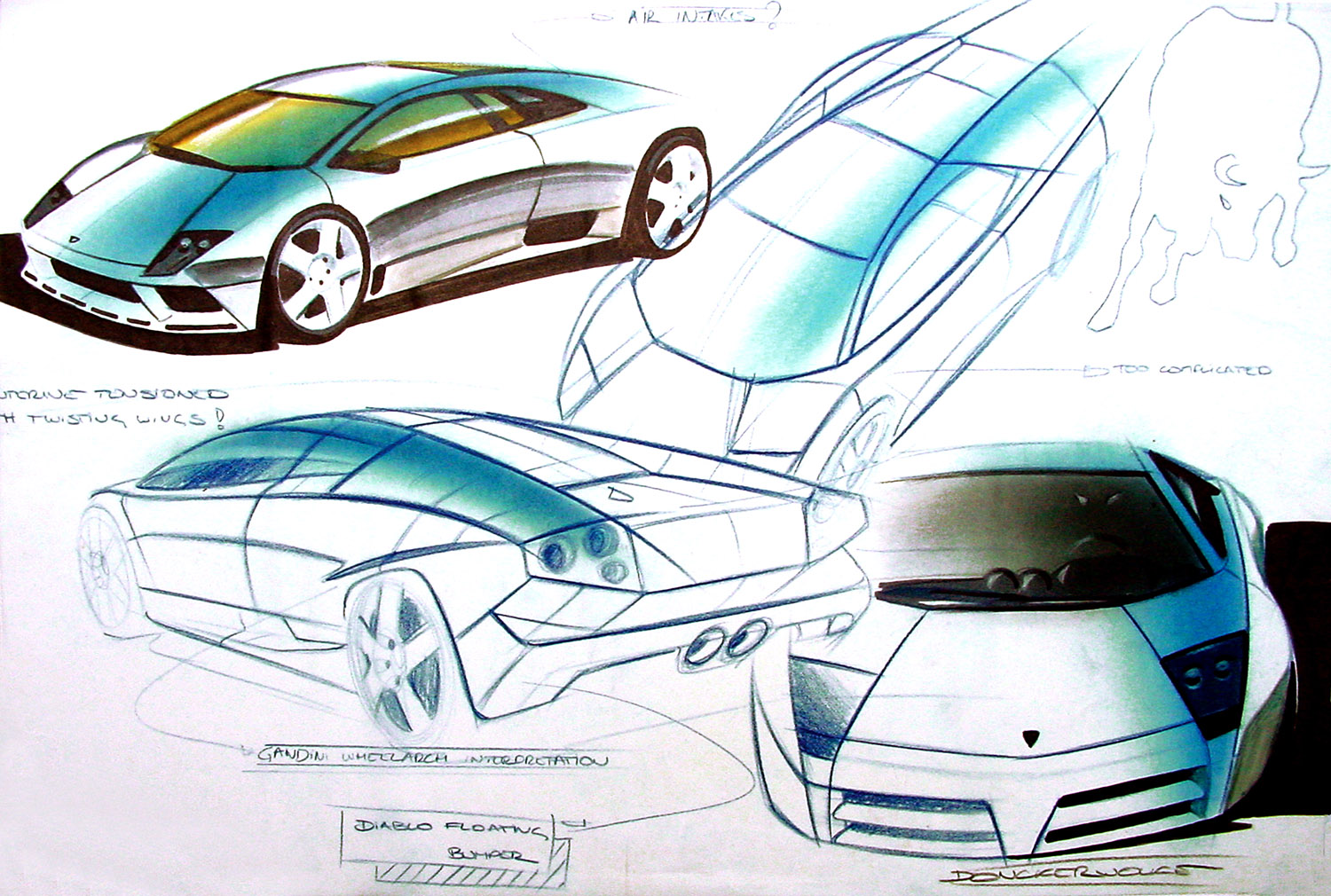
Belgian-born Luc Donckerwolke assumed control of the Murciélago project in 1999 and said “I was greatly influenced by the Countach for its architecture and volume, as well as the Miura, for its sexiness.”
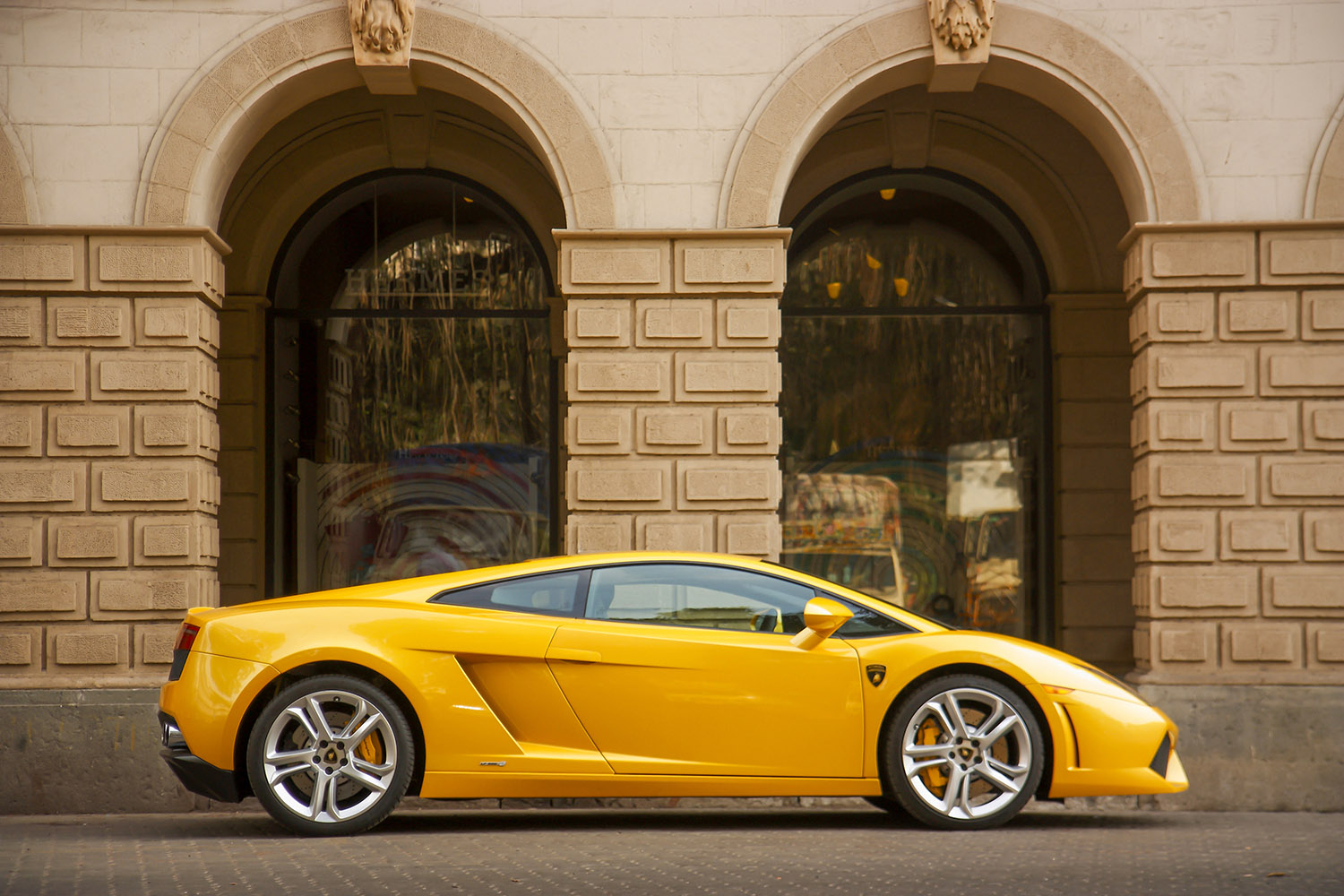
Another fascinating tale of design ownership was the Gallardo. First given to Giugiaro, the project came back to Donckerwolke as the Giugiaro design needed to be altered to allow the body panels to be made at Audi’s Neckarsulm facilities. Lamborghini was now fully international.
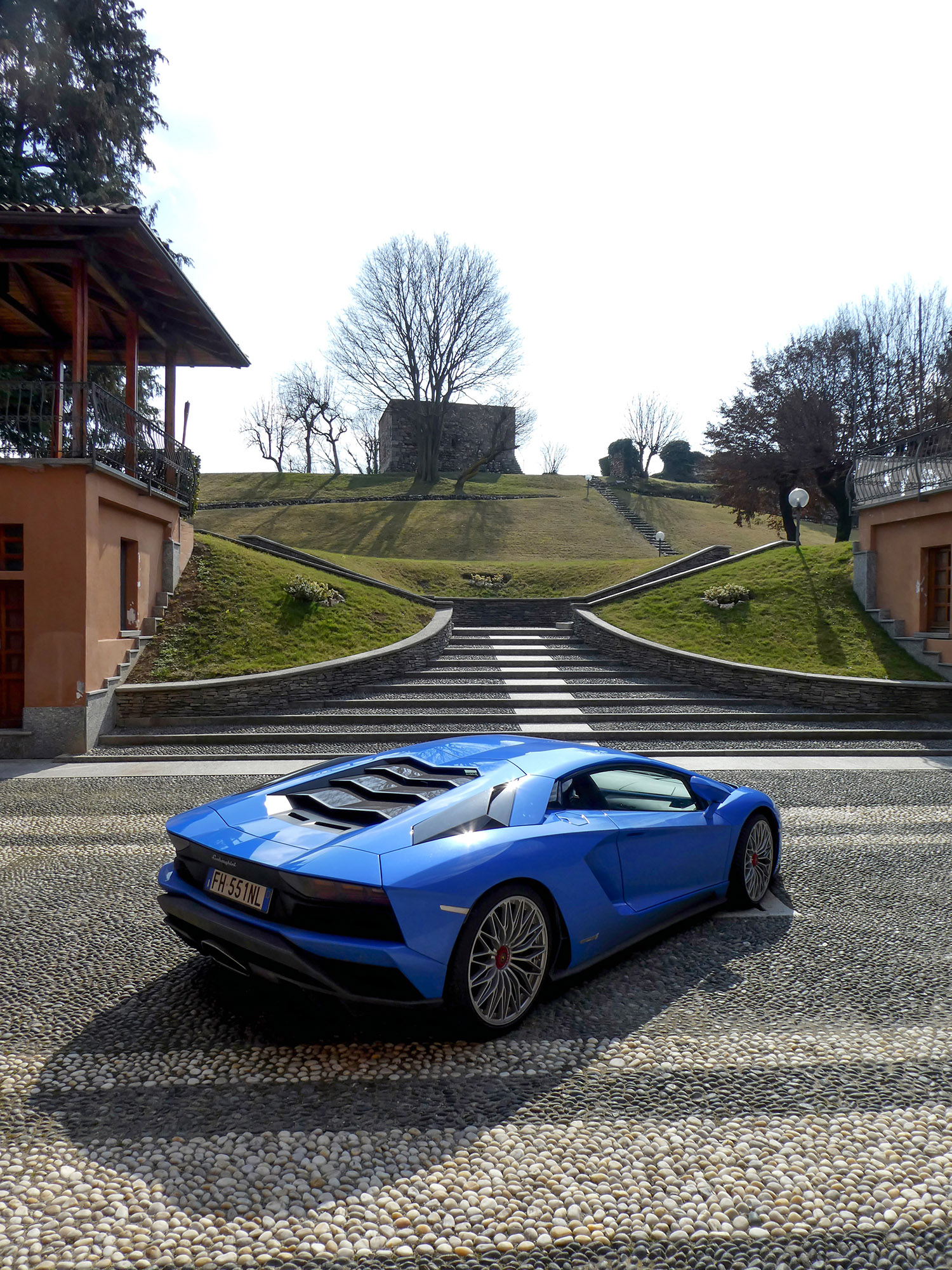
The rear slats are reminiscent of the Miura but the new Aventador boasted a new V12 built with Audi’s assistance, and spelled the end of the amazing Bizzarrini V12 from 1963 which powered over 12,000 Lamborghinis. Here color, light and angle make the Aventador beautiful rather than just remarkable.
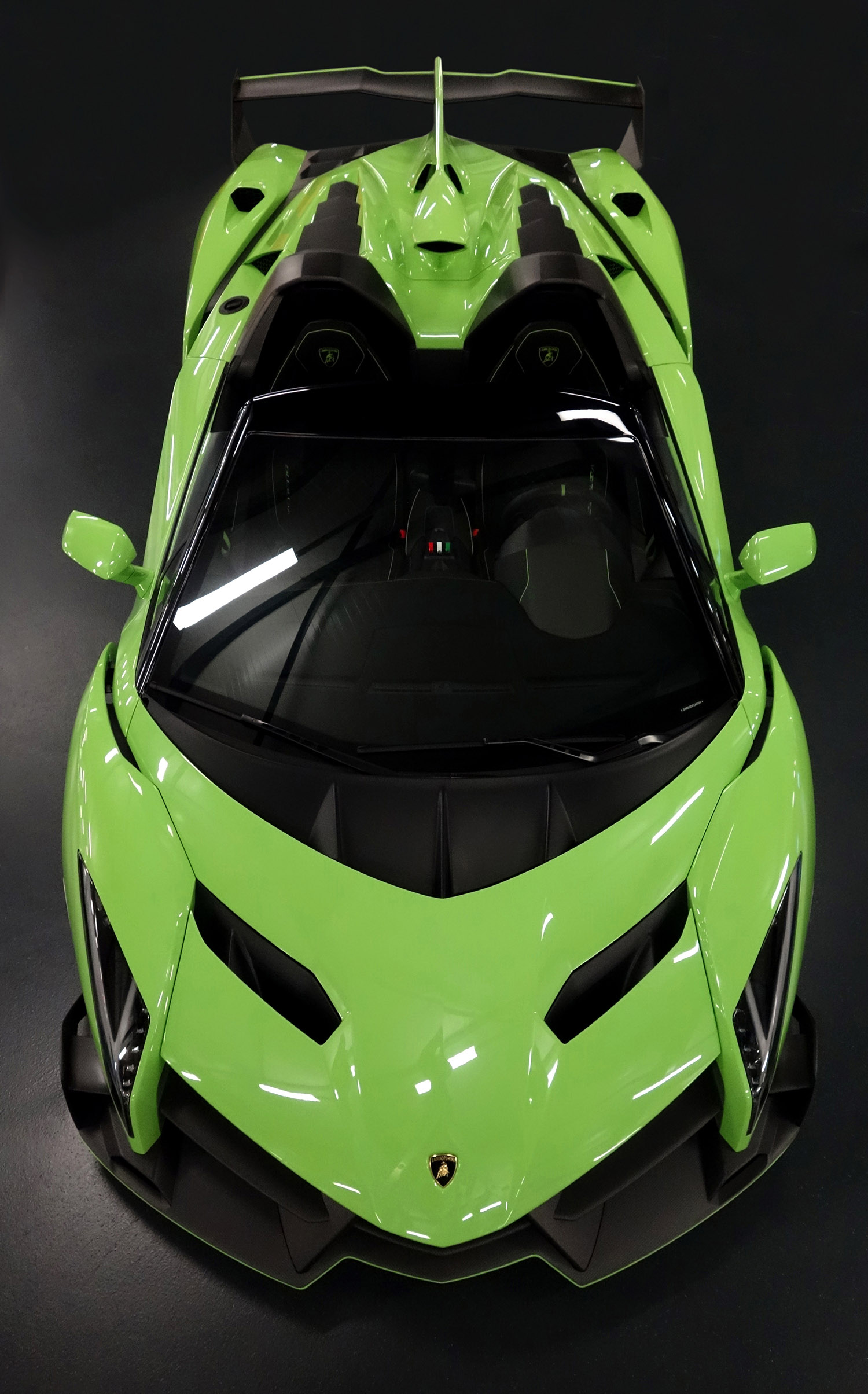
The Veneno LP 750-4 in 2013 managed to find 15 buyers despite the overabundance of geegaws. Things don’t always go well on the drawing board.
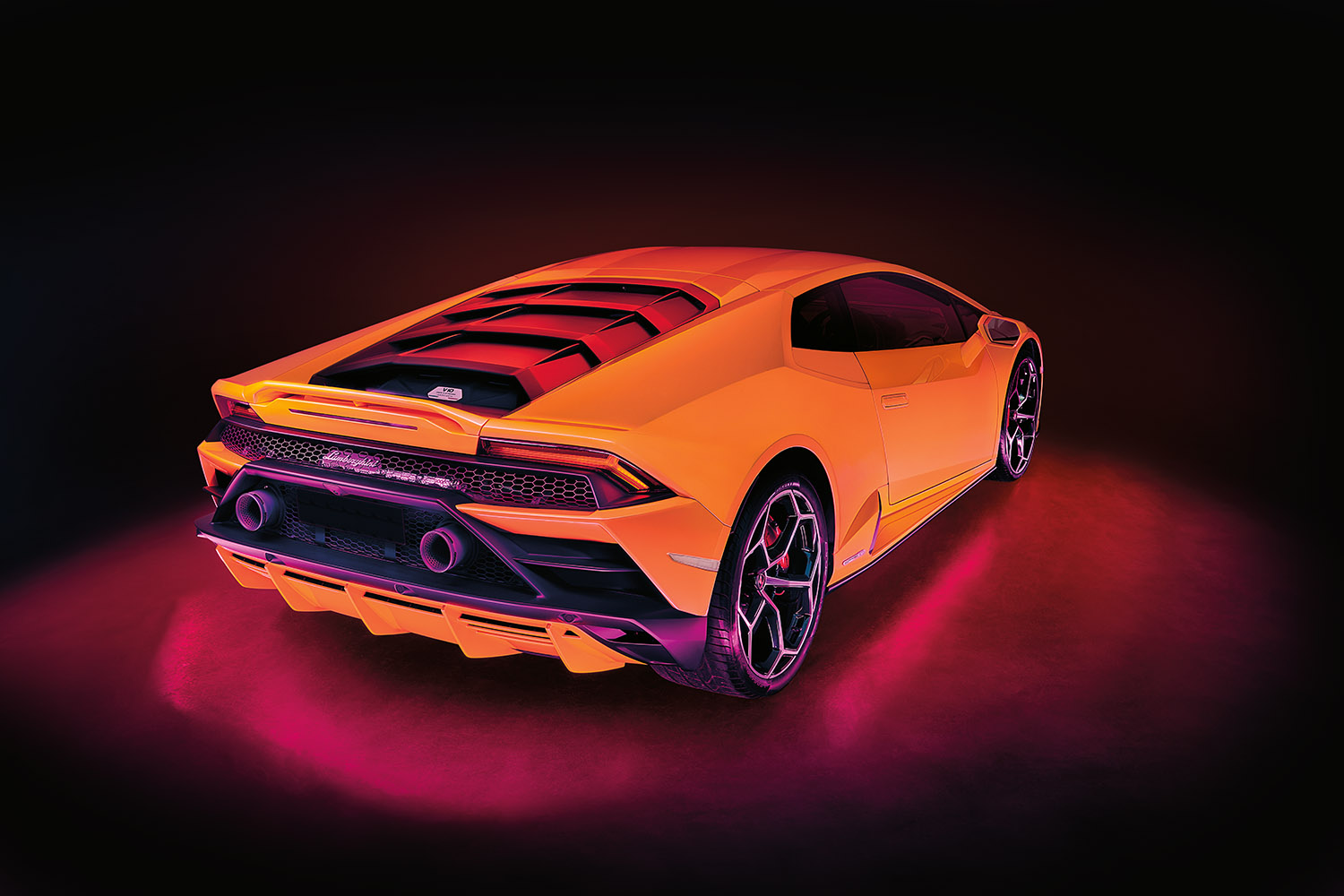
The Huracán provided the success Chrysler dreamed of: as of June 2021 some 18,000 Huracán’s have found buyers. Again, stunning photography and reproduction.
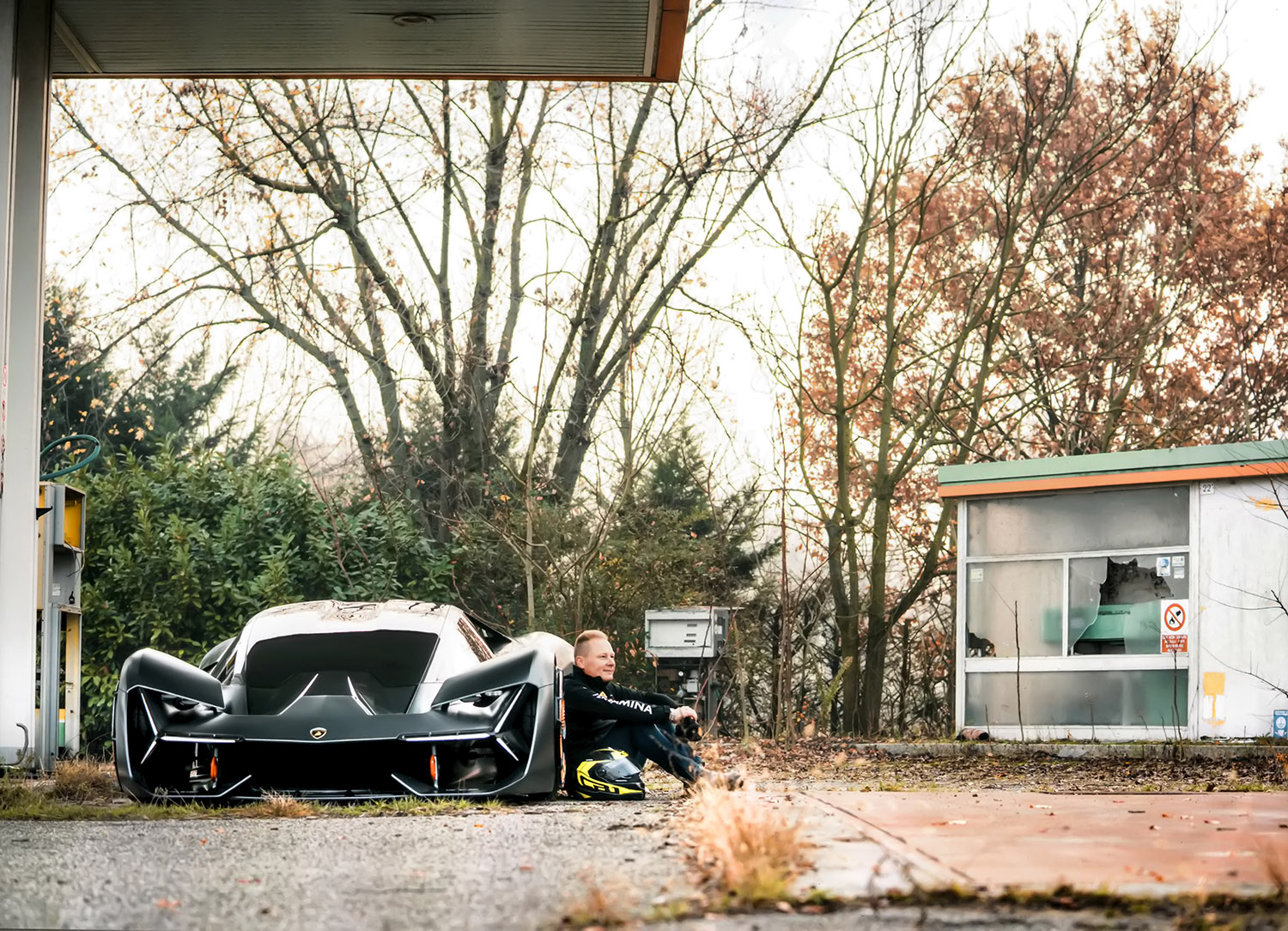
P764-765 Today’s head of design, Mitja Borkert grew up in the former East Germany looking at Trabants, and one of the few designers who did not have a Countach poster in the bedroom. A car guy nonethless. Here he sits by the Terzo Millennio and ponders the future of Lamborghini and the supercar. Our guess is it will be around for quite a while yet, with or without gas.
Order here!
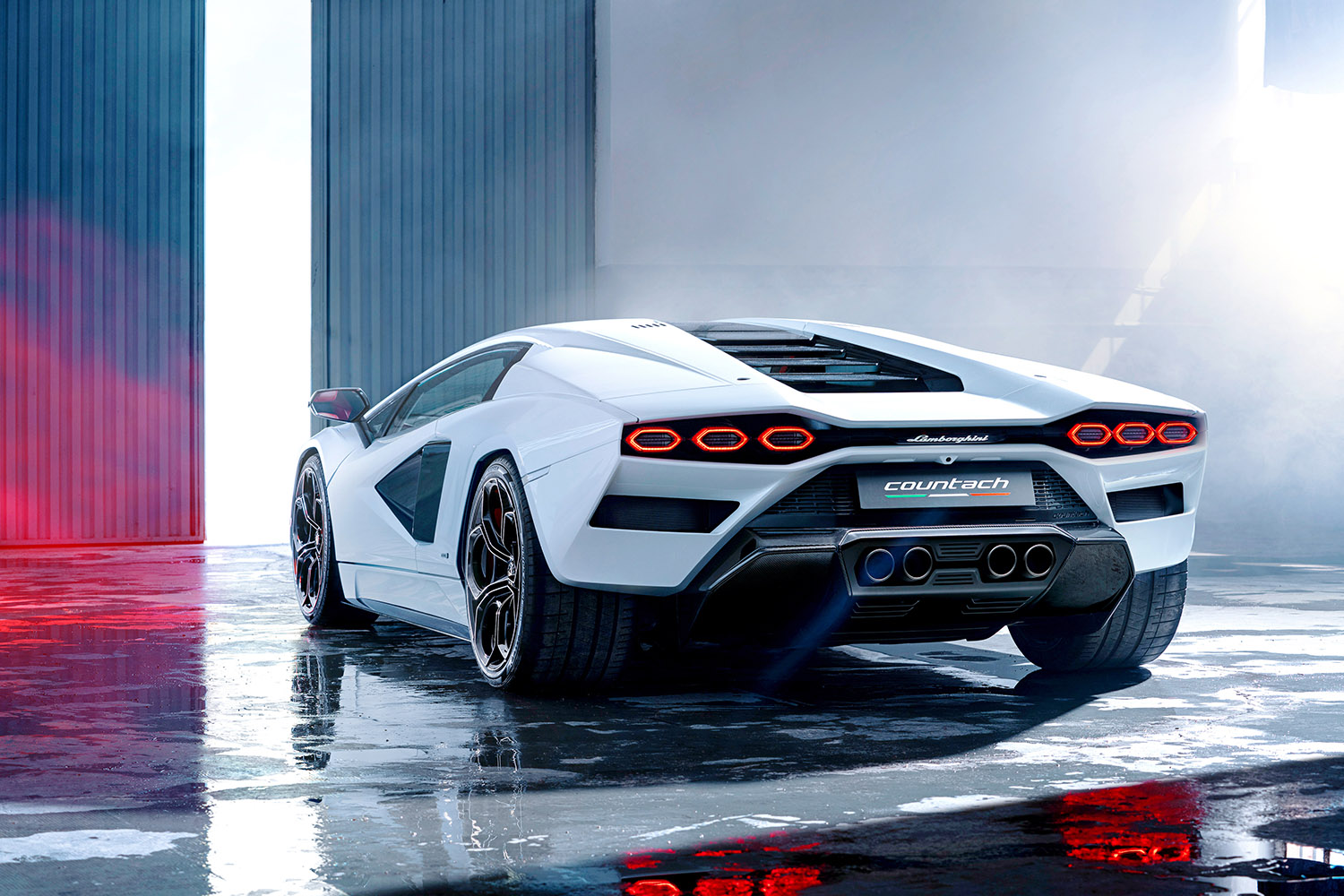
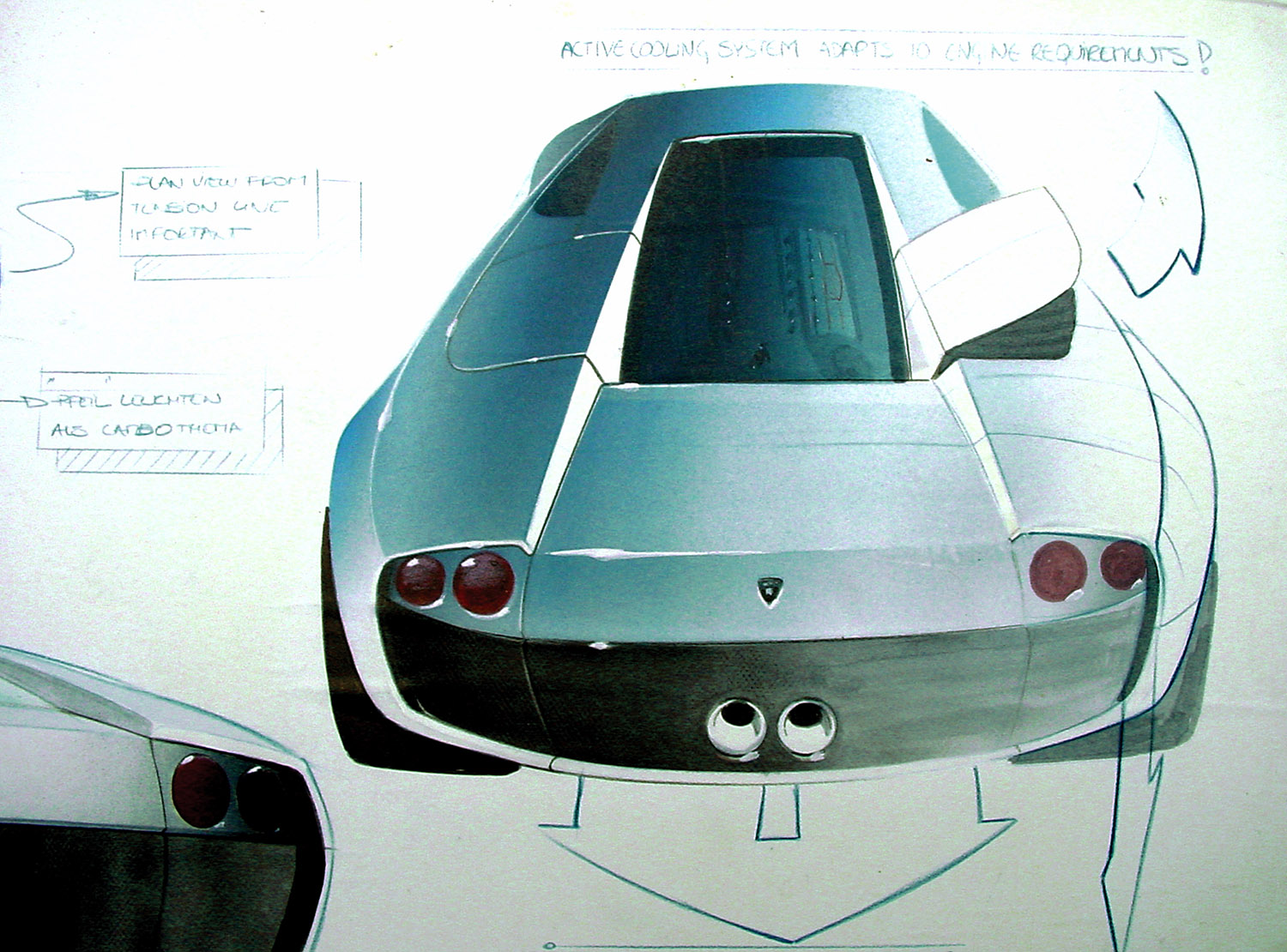
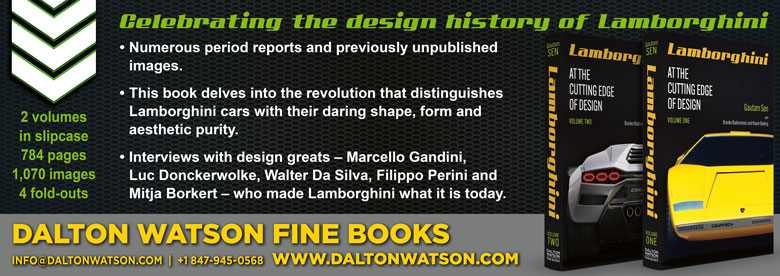
First, yes I love what Lamborghini has done in its work over 50+ years. But I wonder if we care most about design, where form and function meet, or is it just styling the company grabs our attention with, how things look, sometimes with too little attn to function. OCTANE magazine, a recent issue delves into this nicely, gives a fresh take on three models from the past.
i ordered miura #12–more or less–and got maybe #22 or 23. am i the only one in the world who thinks the countach is unattractive in every detail? walking thru the shop garage with sig. lamborgini i spotted the 350z, which i really liked. lamborghini expressed disgust with it and with my feeble italian i think he told me he took it back from the showroom somewhere else because he didn’t want people looking at it. he was happy to let me sit in it and i liked the extra headroom it had over the miura prototype. people were crawling all over my yenko stinger and karen told me that if i’d had 10% of her bargaining skills i probably could’ve gotten a good deal on a trade. but i thought jeepers re the idea of having 2 lamborghinis! bill pope has it in scottsdale and i wandered around it at pebble beach in ’19 where it was nearby my bristol 407 zagato in the zagato lineup.
I was at my first Turin show in 1971 standing very close to the about to be revealed Countach.
Nuccio Bertone tore the cover off and it was stunning. Small with a huge black NACA duct on the side in matte finish dayglo orange. That is what I now remember.
It was the first time that I saw Nuccio Bertone. Years later, 1993 or 1994, he told me through Luciano d’ Ambrosio that they were almost finished with a new Lamborghini when a large truck appeared from AUDI and all the Bertone design properties were taken away.
Stile Bertone never received any credit for the design of that car. He was very disappointed in that.
I asked a very nice Itlian lady if I could sit in the new Mucialogo in the North American International Auto Show in Detroit and she unlocked it so that I could do so. I entered and sat for a few minutes. I did not know that Lamborghini was at that time the property of Audi but I immediately recognized the elegant finish on the instrumentation that could have only been done by the Audi designers. Then i found out that Lamborghini had been purchased from Chrysler.
In total, the designs display some georgeous car, some are not so but overall the design history is very admirable.